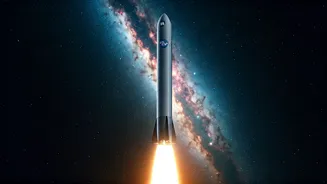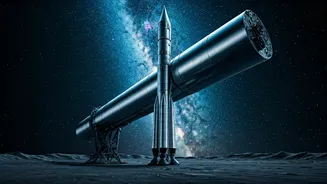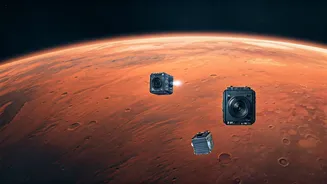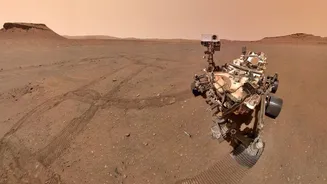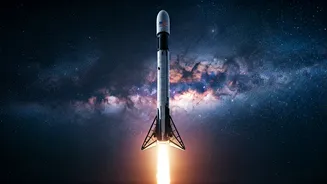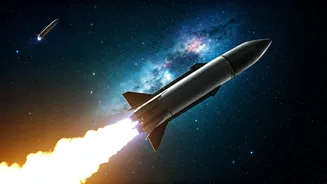Strategic Alliance Emerges
The collaboration between NASA and Blue Origin represents a strategic alliance, combining NASA's extensive experience in space exploration with Blue Origin's
innovative technologies. This partnership signifies a crucial step in furthering space research. NASA, with its legacy of pioneering space missions, brings invaluable resources and expertise to the table. Blue Origin, on the other hand, contributes its advancements in reusable rocket systems and advanced space hardware. This combination allows for a broader spectrum of space-related objectives to be realized. The partnership is about integrating shared goals, expertise, and infrastructure. This approach not only enhances capabilities but also fosters a more dynamic and efficient ecosystem for space exploration.
Mission Objectives Outlined
The joint missions undertaken by NASA and Blue Origin are aimed at achieving several significant objectives. Primarily, these missions focus on advancing our understanding of the universe through scientific research. They aim to deploy advanced instruments and payloads to conduct studies in various domains, from astrophysics to planetary science. In addition to scientific exploration, the partnerships strive to develop and validate innovative space technologies. These include advanced propulsion systems, reusable spacecraft, and cutting-edge communication methods. The primary goals are related to enabling more frequent and cost-effective access to space for both research and commercial purposes. The overall objective is to push the boundaries of what is possible in space. The partnership is designed to establish a sustainable space exploration infrastructure.
Technological Advancements Foreseen
The collaborative efforts between NASA and Blue Origin are expected to yield significant technological advancements. One key area of development is in reusable rocket technology, where Blue Origin's expertise is central. This focus on reusability promises to drastically reduce the costs associated with space travel, facilitating more frequent launches and paving the way for easier access. The partnership also involves developing state-of-the-art space habitats and life support systems, essential for future long-duration missions. Another critical aspect involves advancements in propulsion systems. These will be essential for the next generation of space exploration. The goal is to accelerate the development of autonomous spacecraft and robotic systems, improving mission efficiency and reducing operational costs. The integration of advanced technologies will greatly boost the overall effectiveness of future missions.
Impact and Future Prospects
The collaborative ventures by NASA and Blue Origin are poised to have a broad impact on the future of space exploration. These missions will contribute to breakthroughs in scientific knowledge, potentially unveiling critical insights into the universe. The success of the partnership will also stimulate growth within the commercial space sector, generating opportunities for innovation and economic development. The collaboration serves as a model for how space exploration can be enhanced through partnerships. It promotes cooperation and the sharing of resources and knowledge. As a result, the joint missions are expected to establish a solid foundation for future generations of space explorers. This includes laying the groundwork for more ambitious missions to the Moon, Mars, and beyond, with benefits for science and technology.
